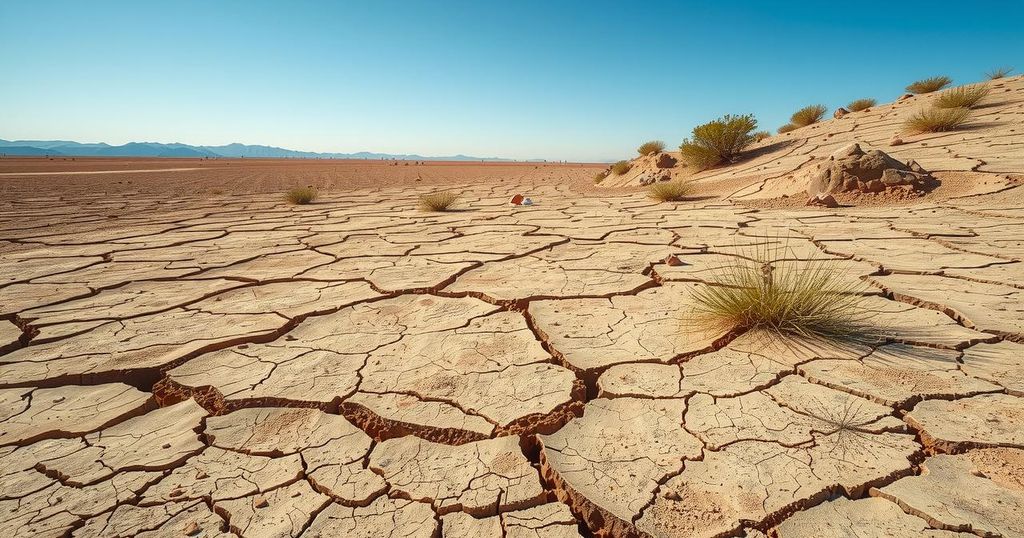Somalia Faces Worsening Water Crisis Amid Drought Conditions
Somalia is experiencing a severe water crisis due to consecutive failed rainy seasons. The upcoming Gu season is forecasted to bring below-average rainfall, exacerbating the situation. Over three million people are currently facing acute water shortages, which could worsen if interventions are not scaled up.
As of March 2025, Somalia is experiencing an acute water crisis stemming from successive failed rainy seasons. Predictions indicate below-average rainfall for the forthcoming Gu season, scheduled from April to June 2025. The 2024 Deyr rains were inconsistent and unevenly distributed, significantly affecting states such as Galmudug, Hirshabelle, South-West, Jubaland, and Puntland, leading to severely reduced precipitation levels. Consequently, groundwater sources have diminished, critically impacting rural communities reliant on shallow wells and seasonal water sources.
Currently, over three million individuals are confronting severe water shortages, with this number likely to escalate depending on the performance of the Gu rains coupled with the scale of humanitarian interventions in the water, sanitation, and hygiene (WASH) sector. The expected below-average rainfall along with rising temperatures is anticipated to worsen drought conditions, further depleting water resources. Projections underscore a high likelihood of below-average rainfall in regions such as Gedo, Hiraan, Middle Shabelle, Bakool, Bay, and inland Galguduud and Mudug, intensifying water scarcity, diminishing agricultural output, and increasing pressures on livestock-dependent communities.
In conclusion, Somalia faces a significant water crisis characterized by below-average rainfall and dwindling groundwater resources. The humanitarian situation is expected to deteriorate further as acute water shortages affect over three million people. Urgent action is needed to address the escalating drought conditions and provide relief to the affected communities, particularly in already vulnerable regions.
Original Source: reliefweb.int




Post Comment